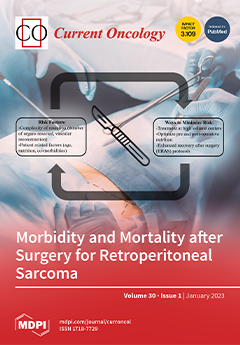Background: Unresectable cholangiocarcinoma prognosis can be extremely variable due to different symptoms and sites of disease involvement at diagnosis and unpredictable chemotherapy response rates. Most patients will usually receive 1st line palliative chemotherapy with platinum compounds and Gemcitabine or Gemcitabine alone. Only a few patients maintain adequate performance status after first-line treatment failure: second-line treatment with FOLFOX or FOLFIRI chemotherapy has been used in this setting with modest overall survival improvement. There is a lack of data concerning whether laboratory findings might help clinicians in identifying those patients with the highest likelihood of benefiting from 2nd line treatment. The aim of this analysis is to assess the prognostic role of a series of easily available laboratory tests in patients with bile duct cancer who received 2nd line chemotherapy. Patients and Methods: Patients with unresectable bile duct cancer treated in 2nd-line setting with platinum-based chemotherapy doublet or FOLFIRI were enrolled. The primary objective of the analysis was to assess overall survival (OS) differences among patients based on the results of lab tests. Serum hemoglobin, neutrophil, lymphocyte, monocyte, platelet absolute count, creatinine, total bilirubin, albumin, LDH, circulating CEA and CA19.9 values were collected at the start of 2nd line treatment. Cut-off values for all lab tests were set by ROC curve analysis. Survival was calculated by the Kaplan–Meier method and differences in survival among stratification factors were assessed by Log-rank test. Cox-proportional-hazard regression was used for multivariate analysis. Level of statistical significance
p was set at 0.05 for all tests. Correction for false discovery error rate was performed by Holm’s stepdown procedure. Results: A total of 46 patients were eligible. Median overall survival of the entire cohort was 8.98 months (95%CI: 6.68–13.93) while mean OS was 17.10 months (standard error: 3.16). Using 6.2 months OS landmark as classification variable for ROC curve analysis, only serum hemoglobin (cut-off: >10 g/dL), albumin (cut-off: >3.5 mg/dL), CA19.9 (cut-off: ≤668 UI/mL), monocyte (cut-off: ≤510/mmc) and neutrophil count (cut-off: ≤5140/mmc) were significantly associated with the chosen end-point. Multivariate analysis confirmed an independent statistically significant impact on overall survival only for hemoglobin (Exp(b): 0.12,
p = 0.0023) and neutrophil count (Exp(b): 0.30,
p = 0.0039). Based on these results, using both hemoglobin and neutrophil count, three prognostic groups were defined: patients with both favorable factors had 12.63 months median OS vs. 6.75 months of patients with only one favorable factor vs. 1.31 months of those with neither. The difference between these three groups of patients was statistically significant (
p < 0.0001). Discussion: Second-line palliative chemotherapy can be a potentially useful option for a few patients with unresectable/metastatic bile duct cancer. Even though assessment of patients’ prognosis might be difficult due to the complex behavior of this disease, a series of easily available laboratory tests might be used for these means: serum hemoglobin and neutrophil count we0re able to define subsets of patients with entirely different prognoses. It is hoped that this score will be prospectively validated in a larger group of patients in order to improve treatment decisions in patients with unresectable bile duct cancer candidate to receive palliative 2nd line chemotherapy.
Full article






